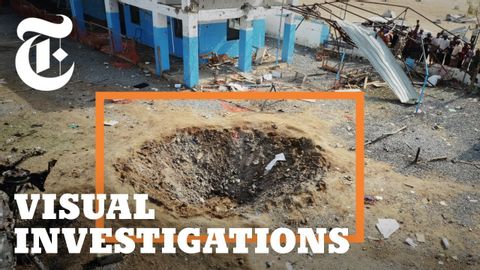米軍の武器がイエメンの病院を襲うことになった経緯|NYT - 視覚調査 (How U.S. Weapons Ended Up Hitting Hospitals in Yemen | NYT - Visual Investigations)
林宜悉 が 2021 年 01 月 14 日 に投稿  この条件に一致する単語はありません
この条件に一致する単語はありません- n. (c./u.)~へ行く手段;利用する機会;アクセス
- v.t.利用可能である : 使用許可を得る
- v.t./i.アクセス;アクセスする
US /kæmˈpen/
・
UK /kæm'peɪn/
- v.i.運動を起こす
- n. (c./u.)組織的運動;作戦;選挙運動
- v.t.推進する
US /ˈkɑnˌflɪkt/
・
UK /'kɒnflɪkt/
- n. (c./u.)対立;対立;戦争;内なる葛藤
- v.t./i.矛盾する : 衝突する
- v.t.打つ;削除する
- n. (c./u.)打つ;ストライク;ストライキ;ストライク;攻撃
- v.i.突然~の状態になる;突然思いつく
エネルギーを使用
すべての単語を解除
発音・解説・フィルター機能を解除

